June 21, 2022
Soaring into Summer!
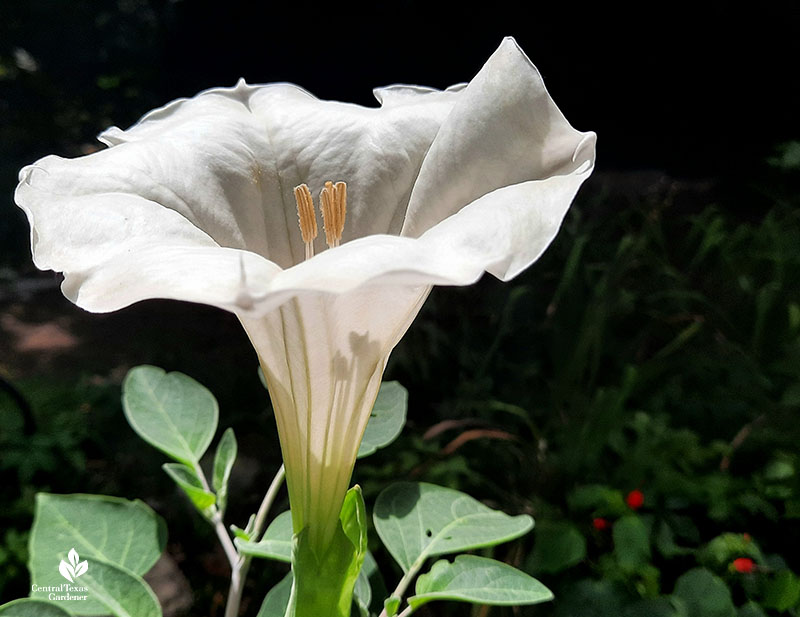
Flamboyant datura beckons us out into summer evenings once the sun goes down, giving us a slight break from merciless heat. Hawk moths dip into deep white trumpets by night and bees sip by day. In the beds beyond, hummingbirds dive into native turk’s cap flowers.
There are several species of datura. Mine is native D. wrightii that sprung up in Bastrop after the 2011 fires. Last year, a friend passed along seeds that I planted in a large terra cotta urn on my patio. Almost daily I rely on the Wildflower Center’s extensive Native Plants of North America database for identifications and information.
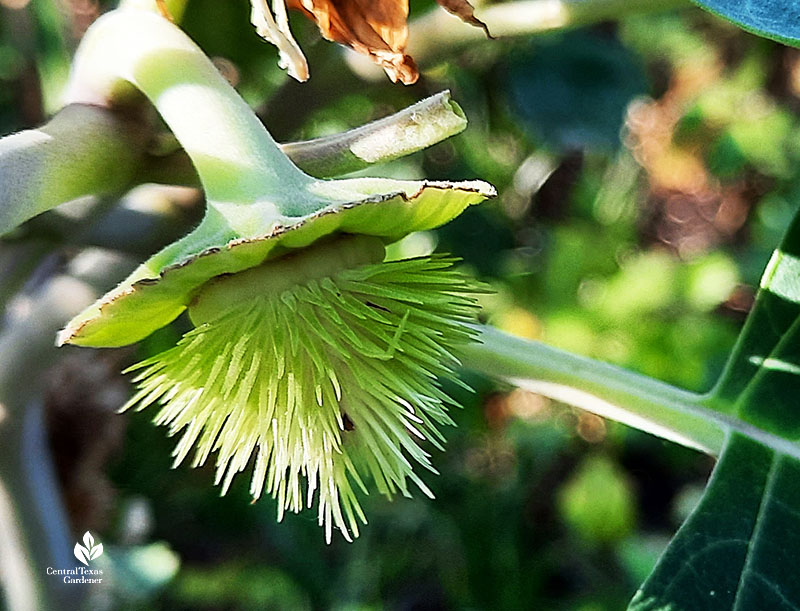
All parts of this intriguing plant are toxic to people and pets, so please keep that in mind. New seed pods look like little dish scrubbers, soft and bouncy as toothbrush bristles. And possibly irresistible for a curious toddler!
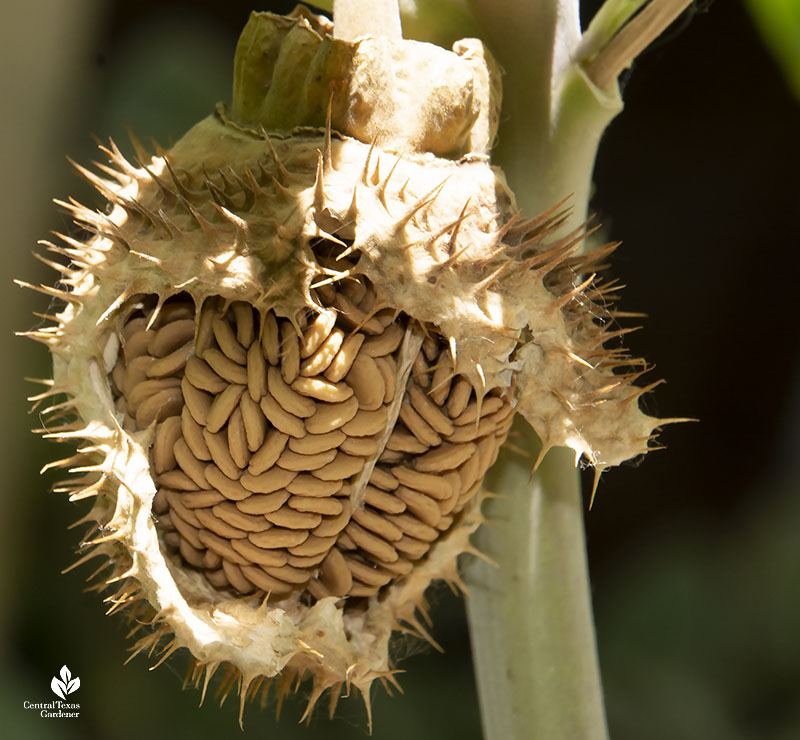
In maturity, the pods’ mighty thorns and hard coat defy fondling. Eventually, they crack open to reveal their future. Nice packing job, don’t you think? It’s easy to see why they spread so prolifically when conditions suit them.
As temperatures spike into record-breaking highs akin to 2011’s brutal weather, hummingbirds head to standing cypress’s flaming hot flowers.
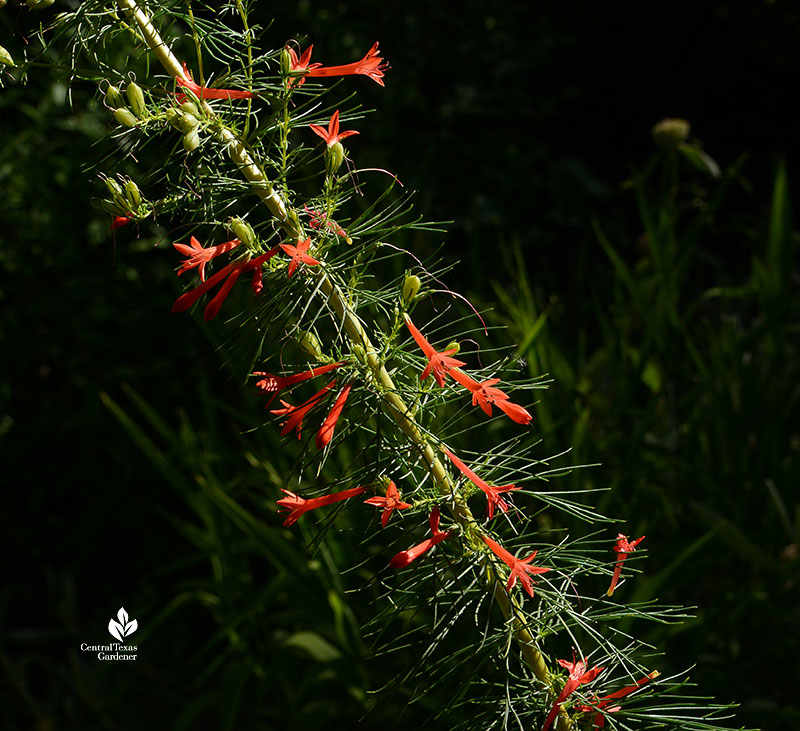
Standing cypress is a native biennial that flowers, sets seeds, and dies in its second year. The friend who dug this one up for me last year tells me that I’ll get another stalk of flowers if I cut it back when it finishes. Sow seeds directly in fall or start as transplants to set out in fall or spring. In the right conditions, it will take care of seeding itself after that.
Even though it seems like summer’s been here since December, native shrub flame acanthus heralded Tuesday’s summer solstice to make it official.
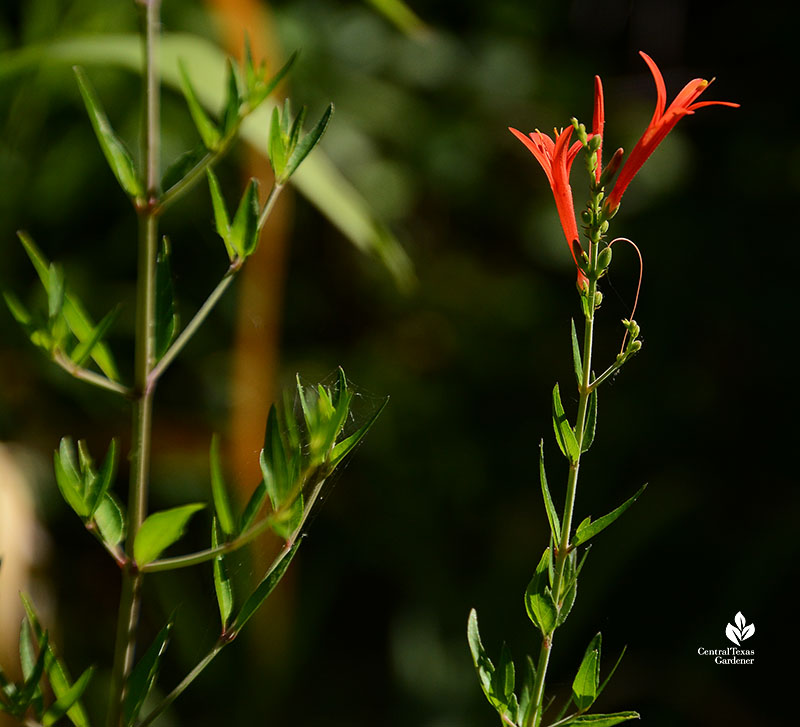
In the evening, I watch hummingbirds dart back and forth between it, the standing cypress, and turk’s caps. All these plants really handle scalding heat and drought quite well as long as they get a little water. Possibly even tougher is soft groundcover snake herb (Dyschoriste linearis).
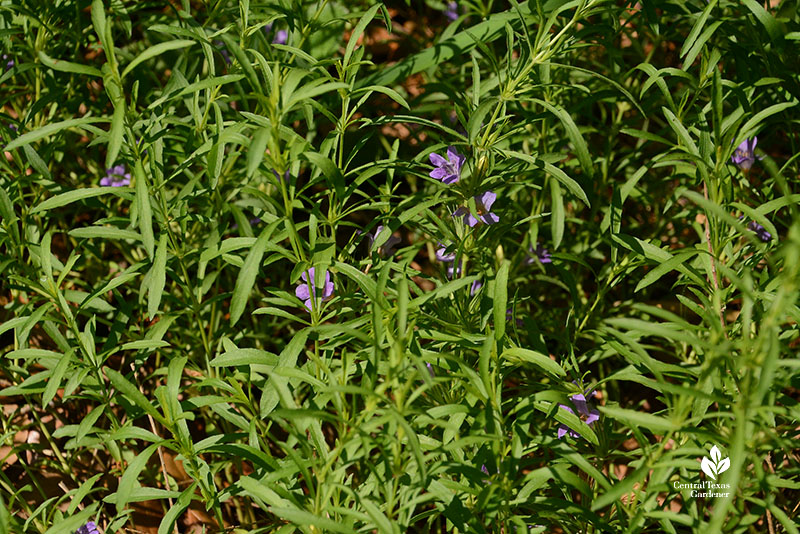
It is ambitious, but if you’re looking for super easy maintenance, evergreen low growth and ability to take some foot traffic, I highly recommend this native for sun or part shade. Tiny flowers attract tiny pollinators late spring to early summer.
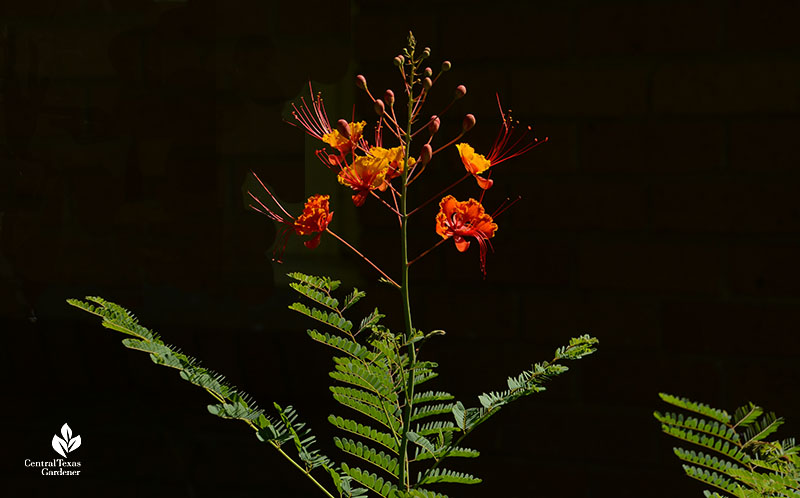
These days of warmer weather all around, Pride of Barbados is a common sight, even after harsh winters. There are so many now even on my street that bees of all kinds don’t have to travel far.
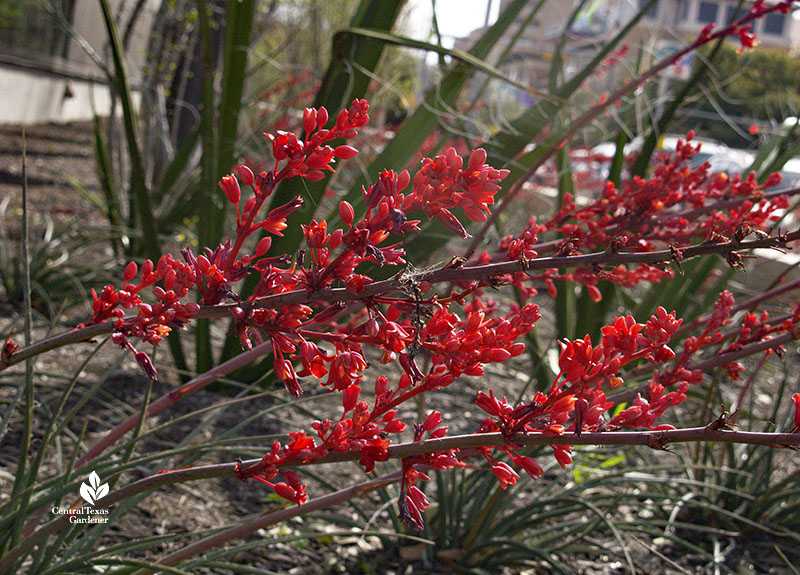
A succulent beloved by bees and hummingbirds is native red yucca (Hesperaloe parviflora), now just about spent. There are a couple of different cultivars, including ‘Brakelights’, that are extremely drought tough. Recently, Texas A&M AgriLife named it a Texas Superstar for its durability across the state.
Although some of our plants are mighty thirsty, the wildlife really needs our help.
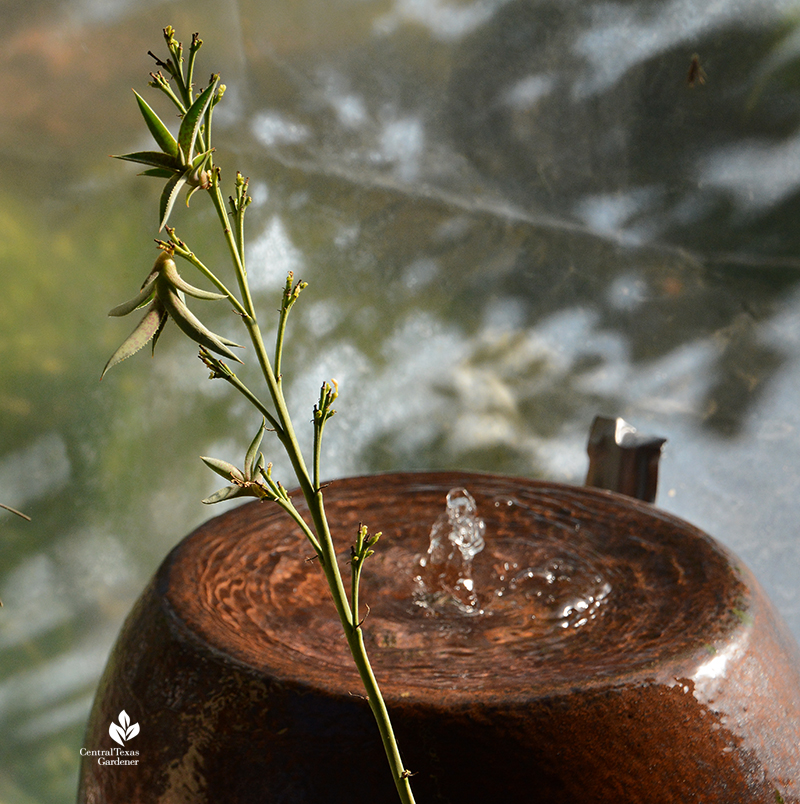
In my yard, I’ve provided several options for various-sized birds as well as for squirrels and the raccoons and possums by night. I’ve got shallow dishes, including rock perches or basins with rims for bees, wasps, lizards, and toads.
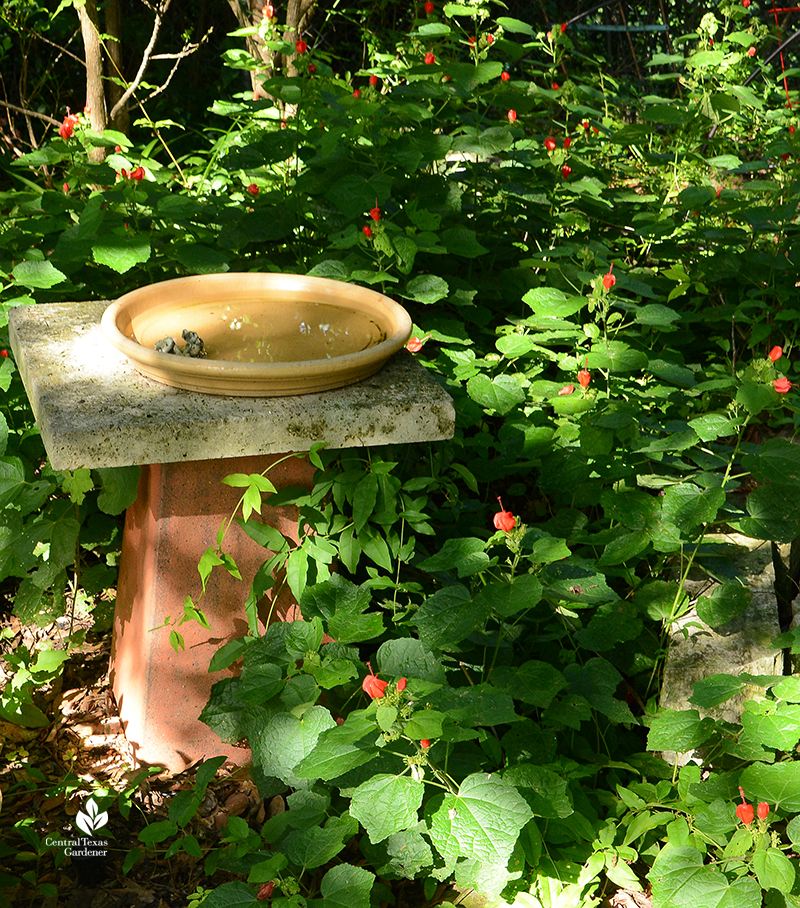
Recently CTG visited Ana and Julio Lopez in their wildlife-friendly Leander backyard. Even with us there, so many birds happily splashed around in their fountain, totally oblivious to us strangers.
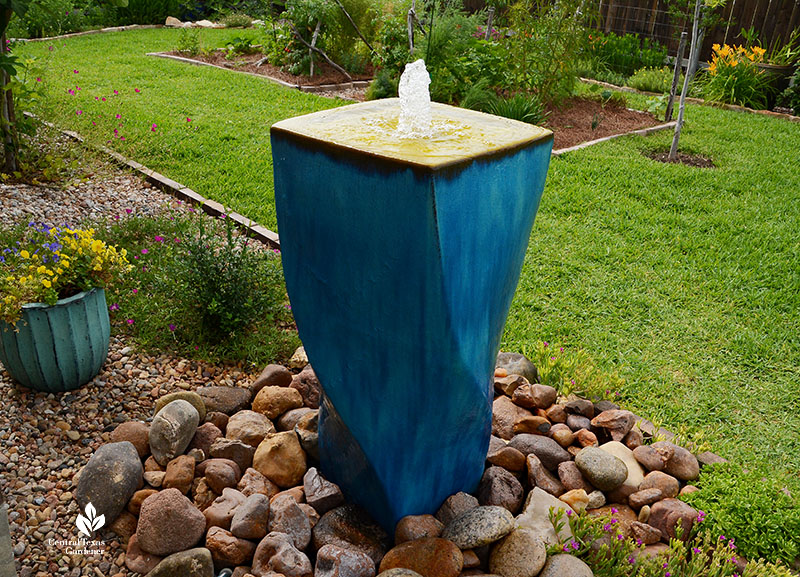
Ana tells me that they’re really going for it now! Their story’s coming your way on July 7.
Here’s some great information from Travis Audubon about how to hydrate thirsty birds.
Thanks for stopping by! Linda

